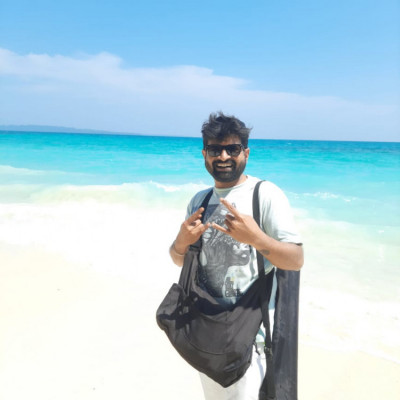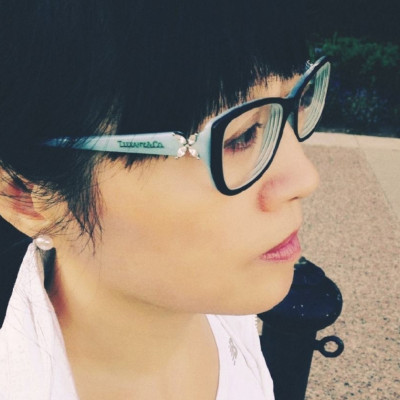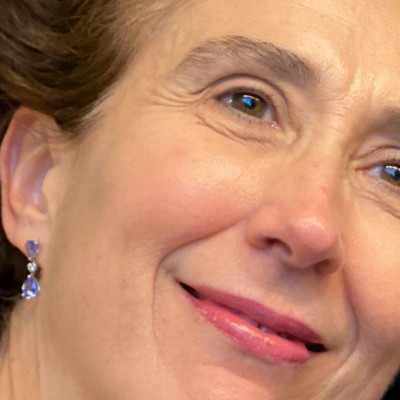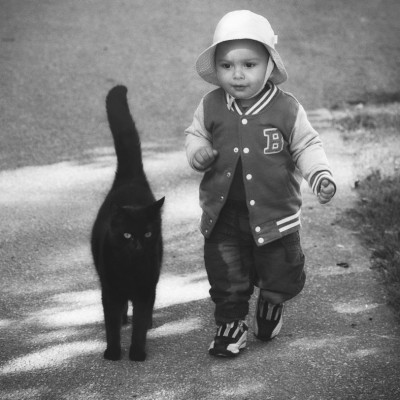SEARCH






|
|
|
|


Article written by 1x Hardware Reviewer and co-founder Jacob Jovelou
Introduction
On 1x.com, almost all photographers use a stand-alone camera to take their photos. As little as less than 1% of the images published have been taken by a smartphone camera. This is probably not a surprise for those of you who are well-acquainted with 1x and our tough requirements to get an image published/awarded. But still, if we look at the world outside 1x, the smartphone camera is by far the most used. In fact, over 99% of all images are snapped with a phone.
The phone has several obvious advantages over the stand-alone camera. The most important one is described perfectly by the cliché phrase - "The best camera is the one you have with you". It is very true. It is also the most discreet camera which is great for street photography or other situations where you don't want to attract too much attention to the fact that you are taking photos. The third major advantage is simplicity. The term "Point and Shoot" is refering to how easy it is to get a great photo without touching one single option or making adjustments. This might sound horrible for the enthusiast photographer who enjoys the manual work. But in some cases, it is very valuable to be able to take a photo quickly that comes out as good as possible with good processing. We don't always have the time to prepare.
Of course there are just as many advantages with a good DSLR or compact camera. The most important one is perhaps that when we carry a "real" camera, we become a photographer. We change our mindset to look for that perfect light, composition and scene. Another important difference is that a big part of the end result is in the hands of the photographer. We control how much light we want to let in with the shutter speed. We define the depth of field with the aperture. We can get exactly the result we want with easy to use physical controls. Lastly but also important is the quality of the image. The size restrictions in a phone makes it hard to compete with real optics and big sensors.
Today we are going to take a look at three of the best mobile phone cameras on the market - iPhone 13 Pro, Samsung S22 Ultra and Google Pixel 6 Pro. Given what I just wrote about the advantages/disadvantages and the requirements to get published on 1x you might ask, why? I doubt no one who reads this review will sell their real camera, but we all need a phone, and why not carry a phone with a competent camera system as a complement? The camera systems in mobile phones are perhaps the major focus of manufacturers like Apple, Samsung, Google, Huawei, Xiaomi, Sony and more. So how good are they, and how big are the differences in end results? This review can perhaps guide you while making your next phone purchase and who knows, maybe you will be inspired to start shooting more mobile photos.
Computational Photography
I want to spend a little time explaining the concept of "Computational Photography". A mobile phone is really a portable super computer with an extremely powerful processor. It is not only used for graphics intensive gaming but also when taking photos to overcome the big hardware limitations of the small camera.
When you are shooting using a modern smartphone, it is actually not taking just one photo but rather hundreds with different exposure settings. In fact, at the press of the shutter button, the camera has already started capturing in case you were a little late. The different versions of the same photo are then processed by the powerful hardware and the sharpest ones are aligned, merged together to create the best possible image (according to the programming of the camera software). This gives photos with a wide dynamic range, superb details in low light, accurate colors and you rarely get portraits where the subject has their eyes closed or a blurry face from movement.
This is perhaps a bit of a controversy for the conserative "classic" photographer who wants to have the ultimate control of everything. You can even go so far as to discuss who is the actual photographer - is it the person pressing the shutter or is it the computer? For me personally I have no problems with this technology. I am still in charge of when a photo should be taken and I have found the scene and composed the photo myself. The computer is just helping me to get the best results, and in a camera this small, it is needed to get good results.
In fact, it is possible to take really amazing photos that would require lots of manual editing to get a smilar result when using a stand-alone camera. The photo of the northern lights above is a good example of something that is really simple to snap with the mobile phone and although the sharpness and technical quality would be superior from a DSLR, I managed to get a very good result with no time spent in editing software.
Technology
There are many technical differences between a smartphone camera and a DSLR. The most obvious one is that you cannot change lenses on a phone. It usually comes with different lenses for various focal lengths and they all have their own image sensor. If the phone has three lenses on the back, it can be considered as three different cameras entirely, usually with different sensor size, quality and resolution. Also the lenses in a phone is made of plastic and usually has a much worse optical performance than even the cheapest kit lenses for DSLR.
The thin construction of a phone gives almost no space for a zoom lens. Both S22 Ultra (10x) and Pixel 6 Pro (4x) has something called a periscope lens to achieve great magnification. This works by mounting the lens horizontally inside of the phone and then bending the light from the lens into the optics by using a periscope.
Another important difference is that all lenses on phones are fixed focal length. If we take S22 Ultra as an example, it has four cameras with 0.6x, 1x, 3x and 10x focal lengths. If you zoom between them, for instance 5x magnification, it will use digital zoom (cropping) from the 3x lens which gives worse quality than a variable DSLR zoom lens.
The aperture is also fixed, so there is no way you can change or control the depth of field or limit the amount of light like you can on a regular camera.
The Contestants - Apple iPhone 13 Pro (Max)
Apple created the first smartphone in 2007 and is in the top of smartphone manufacturers. They release new phones once per year and the major developments from year to year are camera improvements. The 13 Pro and 13 Pro Max are the most expensive in the series with the most advanced camera system consisting of three lenses:
iPhone 13 Pro starts at $999 and is available in 128GB, 256GB, 512GB and 1TB configurations with colors graphite, silver, gold, blue and green.
The Contestants - Samsung S22 Ultra
Samsung has a long history of mobile phone development, releasing their first smartphone in 2009. Like Apple, they release phones once per year and the Ultra model has the most powerful camera system with four lenses:
S22 Ultra starts at $1199 and is available in 128GB, 256GB, 512GB and 1TB configurations with colors black, white, green and red.
The Contestants - Google Pixel 6 Pro
Google, being the software company they are, started the trend with "Computational Photography". Their camera is widely acclaimed to be the best at maximising the potential of the limited hardware thanks to smart algorithms and machine learning. They release two versions of the Pixel with two different sizes each year. The bigger of the two (Pro) has the more advanced camera with three lenses:
Worth noting is that the Pixel is not available in all countries. It starts at $699 and comes with either 128GB, 256GB or 512GB storage in black, gold or silver.
Comparing the technical specs
The easiest difference to spot is that Apple is sticking with a 12MP sensor while Samsung and Google has equipped their phones with higher resolution for the main lens. With the Samsung it is possible to take photos in the full 108MP resolution while Google use a technology called pixel binning to merge 4 pixels into 1 to produce a final image with 12MP resolution. The default setting on the Samsung is also to use pixel binning, so unless you manually enable the full 108MP mode, the images will be 12MP. It is also worth noting that the processing is limited when shooting full resolution on the Samsung which gives a less appealing final result.
The resolution of the sensor is not really critical to the end result. Since the optics in mobile phones have a limited performance, this will be the main limiting factor and not the amount of pixels.
Another difference worth noting is that both Samsung and Apple have a much wider ultrawide than Google. In fact, the ultrawide and wide lenses of the Pixel 6 Pro are so similar in focal length that you barely notice the difference while switching between them. If you like doing architectural photography, this can be an important point to consider.
Also the zooming capability differs and Apple has the smallest optical zoom range limited at 77mm. The addition of a "supertele" with 230mm in S22 Ultra makes this phone special. It opens up possibilities for creative compositions and different perspectives. It is also powerful for nature photographers who wants to keep a distance from the subject. while shooting. Google has the highest resolution (48MP) on their 104mm telephoto camera which makes a difference when you zoom longer than 4x. More pixels means that the digital zoom produces higher quality results. Still, the Pixel 6 Pro cannot compete with Samsung when you reach 10x magnification.

Photo comparisons
Lets cut to the chase and compare these cameras in real life. I invite you to a photo walk in Uppsala, Sweden, where 1x.com was founded in 2007.
By clicking on an image it will open in a new tab where you can compare the different photos by pressing the arrow keys on your keyboard (or using the thumbs below the big image on a mobile phone). You can also see all EXIF data for each photo. Press escape or the icon with an X to return to the review.
Uppsala Cathedral is the biggest church in scandinavia measuring 119m and is the resting place of many famous people like Carl von Linné and Swedish royalties. In front of the church is Gustavianum - an anatomical theatre where medicine students in the past were taught about the inside of the human body.
When it comes to the photos they show some differences in processing and style. iPhone has the most saturated exposure with more contrast (look at the statue in the park that has almost no details in the shadows). Pixel and Samsung both capture more of the details in the shadows of the image. When it comes to details they are all pretty equal despite the fact that iPhone only has a 12MP sensor.


Strengths and weaknesses
I will not announce a winner, since the cameras are so different that it often comes down to personal taste. I will list the biggest strengths and weaknesses of each camera from my point of view.
iPhone 13 Pro (Max) strengths
iPhone 13 Pro (Max) weaknesses
Pixel 6 Pro strengths
Pixel 6 Pro weaknesses
Samsung S22 Ultra strengths
Samsung S22 Ultra weaknesses
Wrap-up
Despite their differences, all three cameras will take excellent images and shows clearly how far the technology has come when it comes to mobile photography. Next time you purchase a phone, I recommend that you take into account how well they perform as a camera, as it can be a great complement when you don't want to carry around the big one.
Feel free to comment below what you think of the cameras and their performance.
If you think that reviews like this is interesting, let me know in the comments below and we'll make sure to test more equipment in the future.
Good light!
 | Write |
 | Nicci I was wandering which one would be best to take photography of art? I use the images to sell on products like wall hangings so I need the images to be able to be blown up. I just don't know if the mp sensors matter? Or if the tech is more important? I just can't seem to find any reviews that help me with this. I know the computer can use it's ai to generate detail if there wasn't any and I'm just worried I'm going to get an iPhone and be confused when the 12mp camera is taking strange photos that make up detail to compensate for the camera. I hope I made sense here (lol)
Ty
-nicci |
 | Nicci To make it more clear I need whatever will get me closest to 12000x12000 at 300 ppi. |
 | Jacob Jovelou FOUNDER It sounds by your description that a mobile phone is not what you need. 12000x12000px is not something any mobile (regardless of specifications) can produce at a decent sharpness. This is because of lack of optical quality and too small image sensors.
Despite the fact that Samsung has 108mp, Pixel 48mp and iPhone 13 Pro Max "only" 12 megapixels, the technical quality and sharpness is pretty much the same because the optics is setting the limit, not the resolution of the sensor.
If a mobile phone is a requirement, I would wait for the iPhone 14 Pro Max which is rumoured to have a new 50MP sensor. In combination with Apple Pro RAW, you will probably be able to get the best possible technical quality. But it will still be far from even the entry DSLRs because of the limitations in size/optics. |
 | Kimberly CREW An interesting comparison Jacob. I have the Apple 12 Pro Max and love the flexibility it give me, honestly I find I use my iPhone camera far more than my pro gear now, even when I am carrying both. It is a more type of spontaneous type of photography. I also often use my phone first to play around with composition to test the scene before I decide if I'm going to dig through my camera bag and decide on lens etc. I'm sure for street photography it works quite well. I've gotten some great night scenes with car trails using the Raw function too. Maybe a smartphone photo competition would be fun to try out sometime, if you haven't already posted one in the past! |
 | Avijit Sheel Hello Jacob! Greetings from India. Thanks a ton for this intense, detailed and comparative review. It's a ready reference which will definitely help my next purchase.
|
 | Vasil Nanev PRO Thank you, I own a Galaxy S22 Ultra and I am happy with the results. |
 | Yanyan Gong PRO Thank you for the detailed comparisons, this article a good reference for my next phone:) |
 | Gilbert Claes PRO Hello Jacob...Very interesting article and very useful. Recently I have been struggling to wear the heavy cameras. This article convinced me to use more my mobile phone. Thank you very much for this information. |
 | Jacob Jovelou FOUNDER Thank you, Gilbert. I am happy to hear that the review was useful. |
 | Franz Engels PRO Thanks a lot, dear Jacob for this very interesting comparison. Lovely to see a smartphone topic on this professional platform! I'm using the iPhone since version 7 (actually version 13 pro) more and more for serious photography, for images that couldn't have been done at all or in the same manner with my DSLR camera or a high quality pocket camera. In my view snapshot photography is an own art form that needs its own special skills, a special mindset and its own tools to get great results. And in the meantime smartphones have become more and more such powerful tools to get unique captures in an absolutely appropriate quality. I really love my Nikon DSLR stuff, but some of my best captures in recent years I just couldn't have done with it. Different tools fit for different needs and challenges. Thanks for sharing! |
 | Jacob Jovelou FOUNDER Great to read that you have similar experiences as me. Thanks for your kind words. |
 | Marie Salmeron-Serrano PRO Such a helpful and in depth review. Thank you so much! |
 | Jacob Jovelou FOUNDER Thank you for your comment. I hope to be able to make more reviews in the future. |
 | Omar Mhanna Awesome article and comparison. I shoot RAW with all my phones, been doing so since it became possible back in Android 5 if I remember correctly.
This happened a few years ago on a telegram channel for a Gcam mod, i was following the discussion and uploading sample pictures so the developers could improve the gcam experience, I think I was using a Oneplus Pro 7 Pro at the time. Well, there was this guy that was very active and I thought to myself that I have seen this name before. After a while it dawned on me that it was Jacob, I wasn't that active on 1x at the time but I still remembered the name, small world when you are a camera geek I guess =) |
 | Jacob Jovelou FOUNDER Hehe, small world indeed |